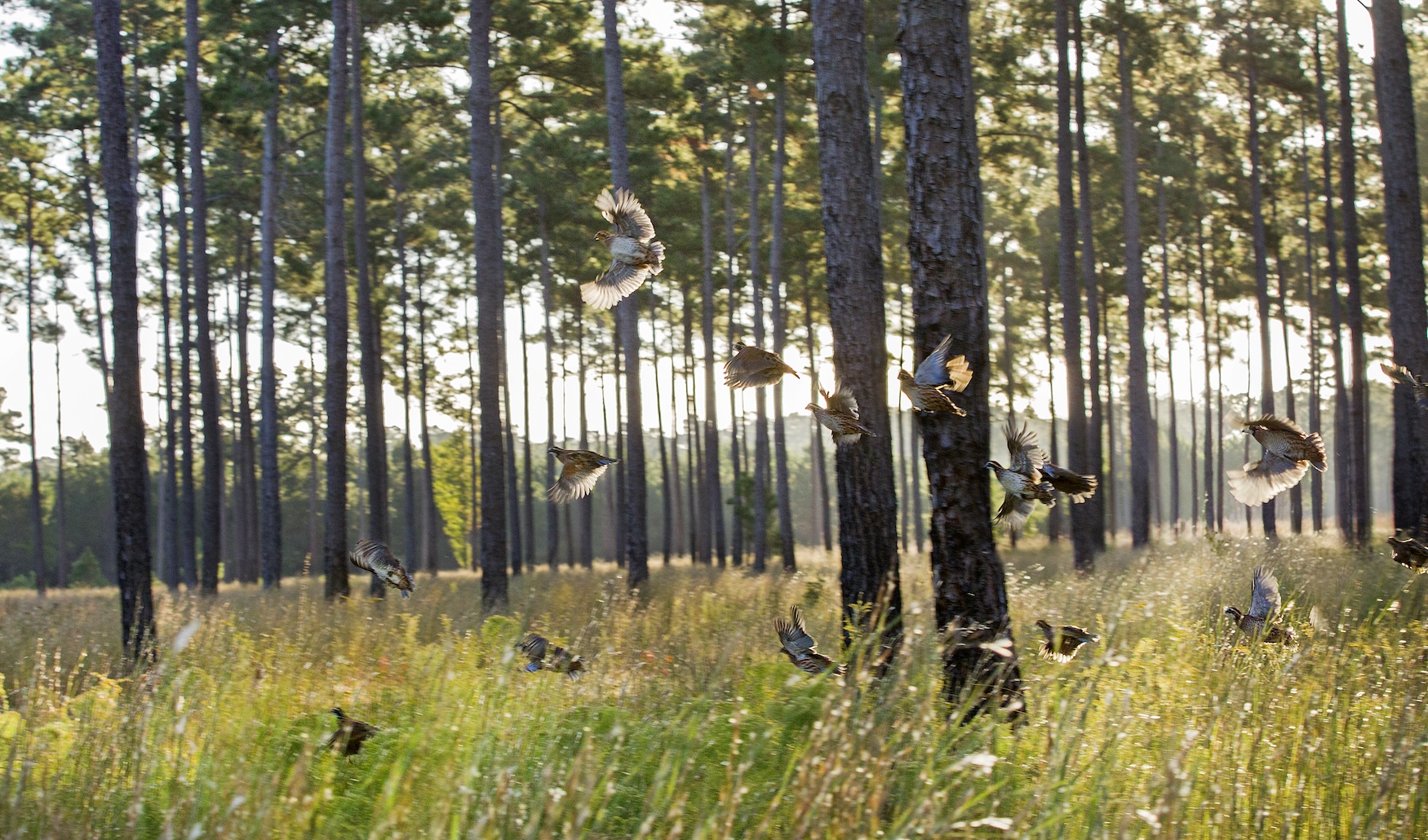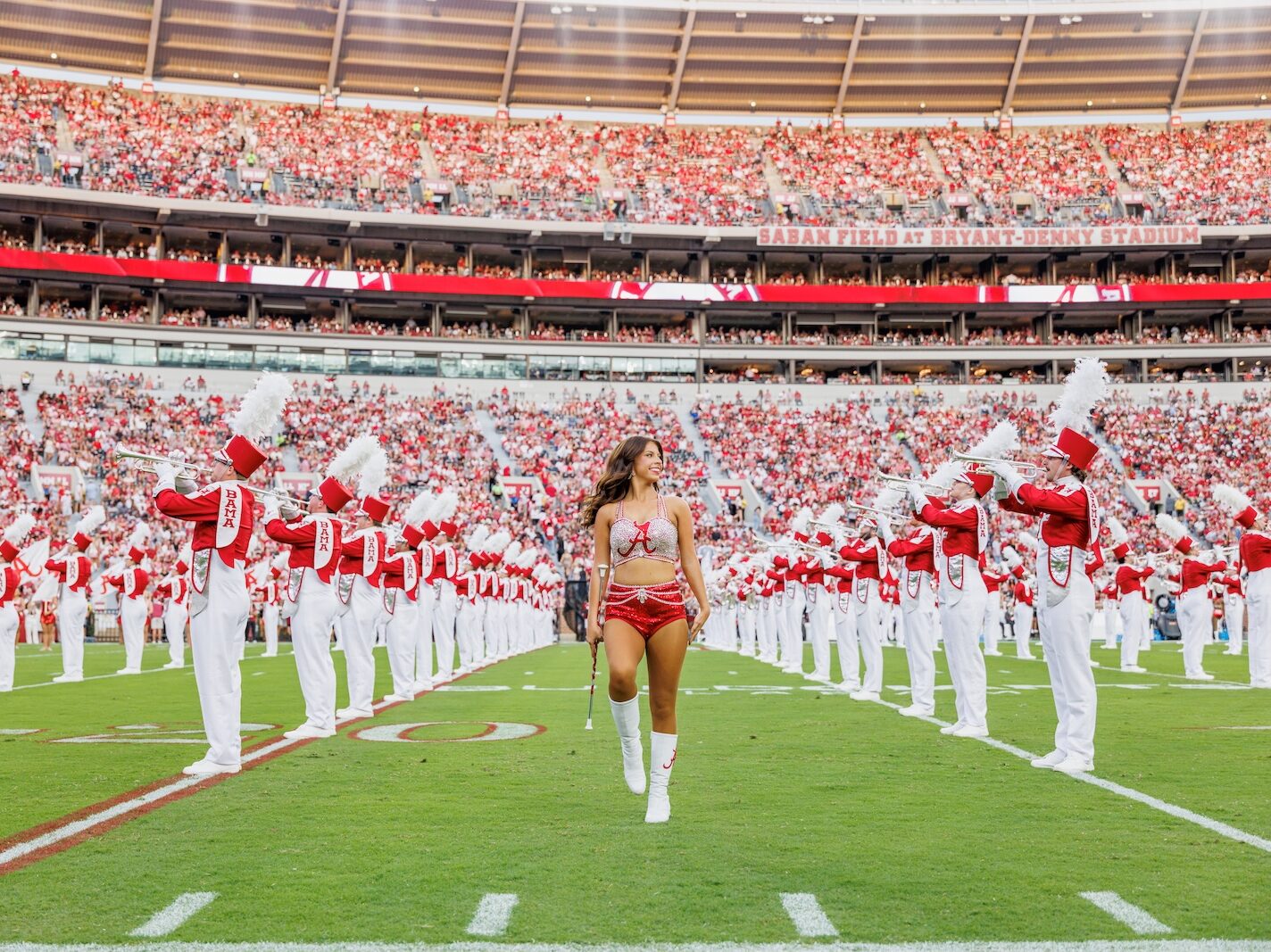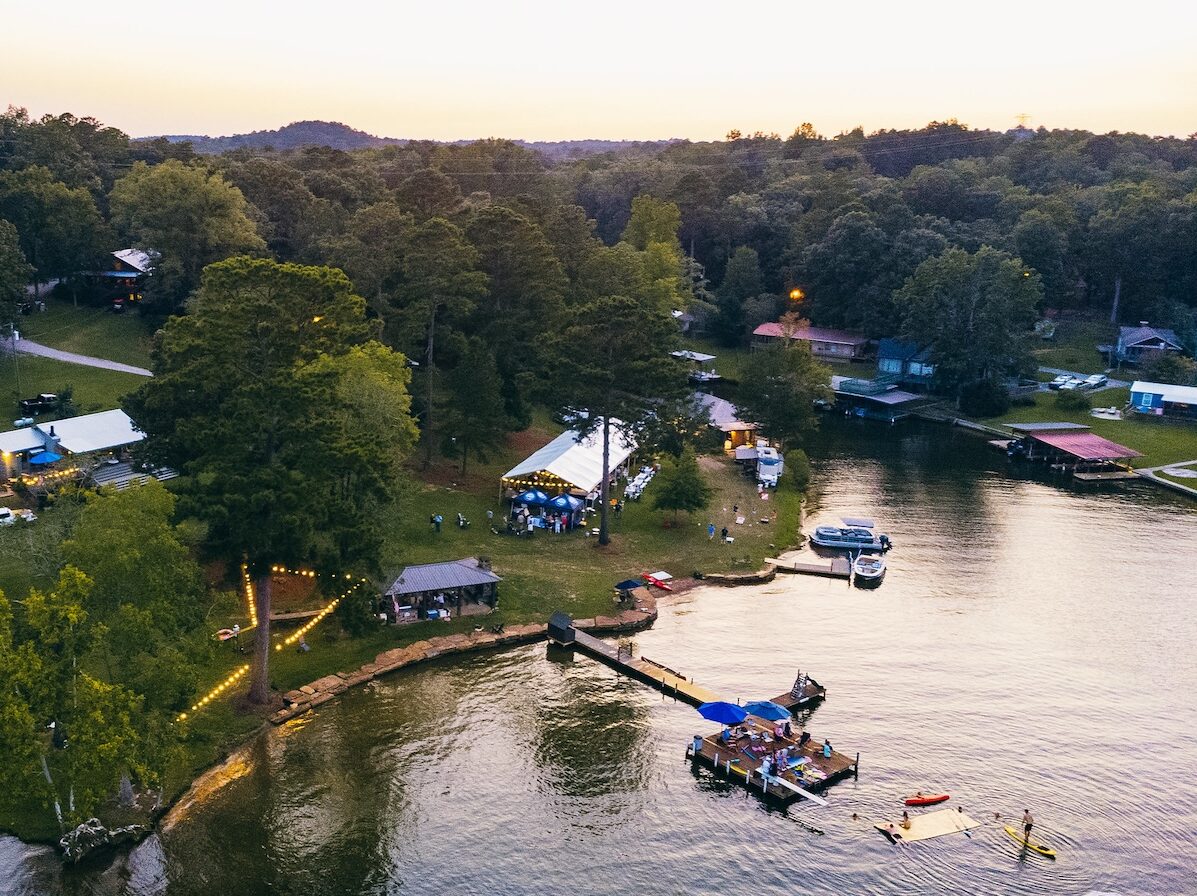Our welcome sign reads “Alabama the Beautiful” as you cross over the state line, and the beauty is indisputable—from vast, towering forests to miles of rivers and streams, Alabama’s landscape allures and invites. Whether you’ve called the state home for decades or are relatively new to the area, Alabama’s rich outdoor terrain captivates us all.
The Yellowhammer State is also currently ranked fourth in biodiversity in regards to state species, and first in biodiversity among states east of the Mississippi River. And while these numbers sound promising, the state faces an ambitious challenge to protect and conserve its most at-risk ecosystem: its grasslands.
So what did Alabama’s grasslands use to look like—and is their conservation possible?
Alabama Grasslands: Then and Now

Pre-restoration in the Black Belt prairie physiographic region (Alabama Wildlife Federation/Contributed)
According to the Southeastern Grasslands Institute, grassland loss is the single greatest conservation issue facing North American biodiversity. In Alabama, over half of the state used to be native grasslands; the Black Belt was estimated to have more than 355,000 acres of grassland, a product of its unique geology and deep, fertile soil.
Claude Jenkins, Resource Stewardship Biologist for the Alabama Wildlife Federation, says it’s important to understand how this extensive change happened.
“Much of the Black Belt was native grasslands over 200 years ago,” says Jenkins. “This area was quickly converted to grow agricultural commodities such as corn, hay, and cotton, and understandably so, because the growing conditions were perfect for these crops.” While European settlers soon altered the landscape by converting grasslands into agriculture fields, the choice consequently caused a catastrophic disruption to the grassland’s ecosystem.
“The General Land Office surveys in the 1830s suggested that prairies covered at least 355,000 acres of the Black Belt prairie physiographic region, with over 180,000 acres in Alabama. However, since European settlement, approximately 99% of the prairies have been lost to agriculture and other land uses.”
The SGI believes that the Alabama two centuries ago would be unrecognizable today.
“The remaining grasslands are just fragments of the historic grasslands,” Jenkins explains. “According to historic surveys, there is only less than one percent of grasslands that remain today.”
Why Grasslands Are Important to Alabama’s Ecosystem
Thomas Reddick, Executive Director of the Alabama Forest Land Trust, is a forester by trade but is deeply passionate about land conservation and dwindling grasslands in the state. The AFLT helps private landowners protect family-owned landscapes that are threatened by fragmentation and development.
“Our primary mission in regards to conservation is to spread awareness and knowledge on the topic,” says Reddick. “Many Alabamians aren’t aware of what a crucial component the grasslands are to our state.”
While the visual appeal of rolling hills of grasslands sounds alluring, the physical beauty of the landscape is just a small component of the importance of grassland conservation. “The grasslands invite a host of diverse wildlife and plant species that our state needs to thrive,” says Reddick.
One of those components is our food system. Alabama’s food supply relies on diverse ecosystems, which host a variety of pollinators that work to pollinate our food. “It’s critical that we retain those pollinators,” Reddick explains. Many game and non-game species thrive in a grassland ecosystem such as deer, turkey, and bobwhite quail.
There are a myriad of other factors at play when it comes to maintaining Alabama’s grasslands; one such factor is the reliance on grasslands as a “layover stop” for migratory species such as monarch butterflies. The species have been in decline, slowly migrating further south to search for new migration paths. Restoring grasslands in the state would help protect the species, along with many others who are threatened by the ecosystem’s disappearance.
Another vital factor in the health and wellness of the state is the grassland’s role in water and soil quality. “With no grass and a significant rain event, the rain will carry the topsoil with it. It’s crucial to retain and build an organic layer of topsoil,” says Reddick. Grasslands’ dense root systems help to trap precipitation, and in turn, cleans and filters the water.
Looking Ahead: What Alabamians Can Do

Post-restoration in the Black Belt prairie physiographic region (Alabama Wildlife Federation/Contributed)
While Alabama’s landscape is changing rapidly due to a variety of factors, not all hope is lost—and every Alabamian can take an active role in conservation efforts.
“The grasslands are slowly being destroyed, but you can choose to bring them back,” says Kyle Lybarger, founder of the Native Habitat Project, whose goal is to promote the restoration and management of native ecosystems. He urges landowners to educate themselves on which plant species are native to the area and avoid planting invasive or non-native species. Lybarger is also a popular social media personality whose videos seek to inform and educate Alabamians on how to save and conserve native plants.
Thomas Reddick agrees that one of the most powerful tools to protect the landscape is education. “Whether you’re managing acres of land or just your own backyard, it’s important to understand what’s safe to plant,” he says.
If you are unsure which species are on your land, The Alabama Wildlife Federation can help you identify and conserve the land’s native ecology. “The AWF assists landowners who may have these prairie fragments,” says Jenkins. “A technical expert can help you determine if natural restoration is possible and can apply the necessary treatments. Regardless, it’s important to seek out assistance from someone who understands the natural process of how to retain or restore native grasslands on your property.”
For more information and resources on Alabama’s diminishing grasslands and how to do your part in conservation efforts, visit the following resources:




